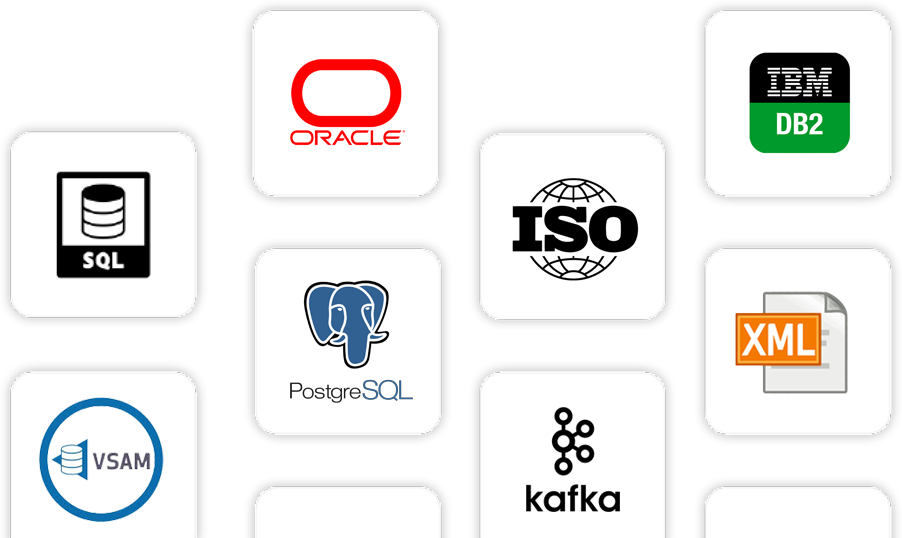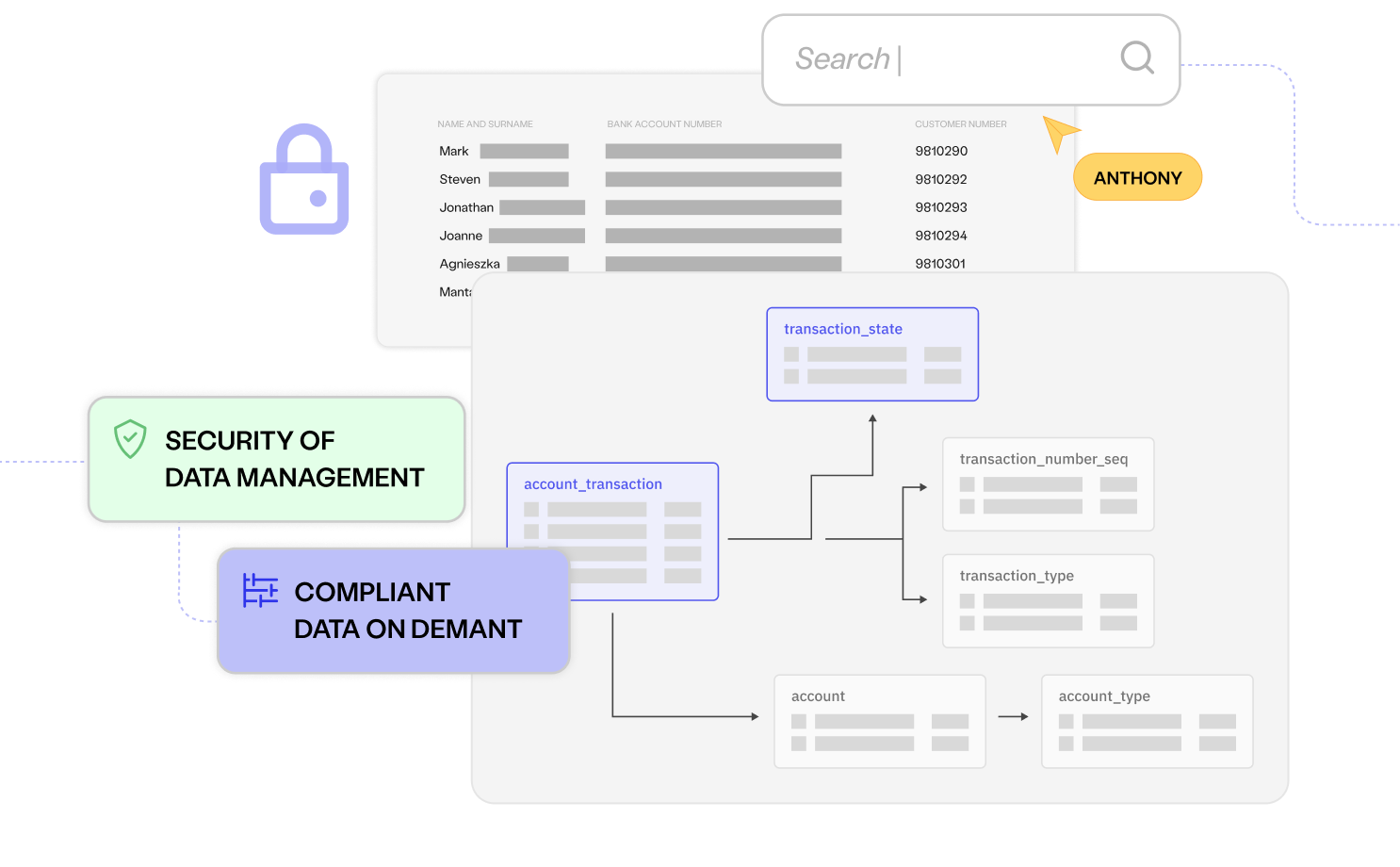
Enterprise Test Data brochure
Discover how you can deliver complete and compliant data on demand across the enterprise.
Read more about Enterprise Test Data brochure Download your copyAI-powered. End-to-end. Your complete test data management platform.
Explore Curiosity's collection of webinars, podcasts, blogs and success stories, covering everything from visual modelling to artificial intelligence and test data management.
Deliver superior test data and overcome the challenges of complexity, legacy, scale, and regulation with Curiosity Software.
Uncover smarter test data, with Curiosity’s all-in-one, AI-accelerated platform. Offering integrated, secure, and intuitive tools to simplify complex application landscapes and overcome test data management challenges.

Build a complete picture of your data landscape, bringing thousands of data sources into a single view, fostering effective test data management strategies.

Take advantage of advanced masking and data generation capabilities to avoid the spread of PII, mitigating the risk of costly data breaches and fines.

Deliver vast, high-quality, and diverse datasets that can support AI initiatives, and help your organisation confidently fuel AI training and validation.

Move from reactive slow test data delivery, to advanced, AI powered insights, actions, and delivery, while removing clashes and constraints.
Gain a deep understanding of your data, intelligently execute on actionable insights, and intuitively monitor your application landscape with our end-to-end test data platform, powered by AI.
Build a complete picture of your data landscape to help you achieve the new standard of test data management with AI-powered discovery and insights.
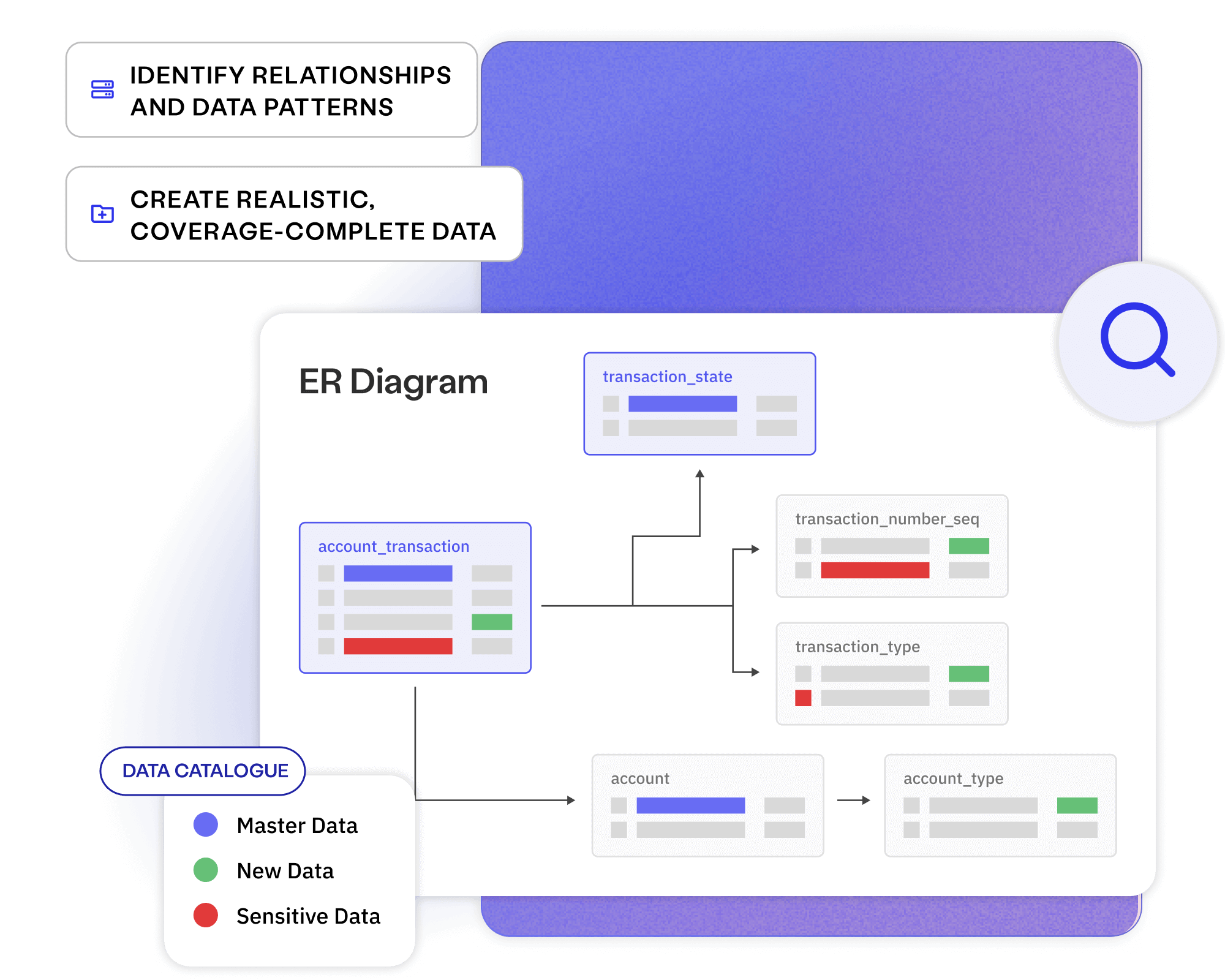
Design the data you need using visual models, and generate synthetic data with precision, diversity, and comprehensive coverage on demand.
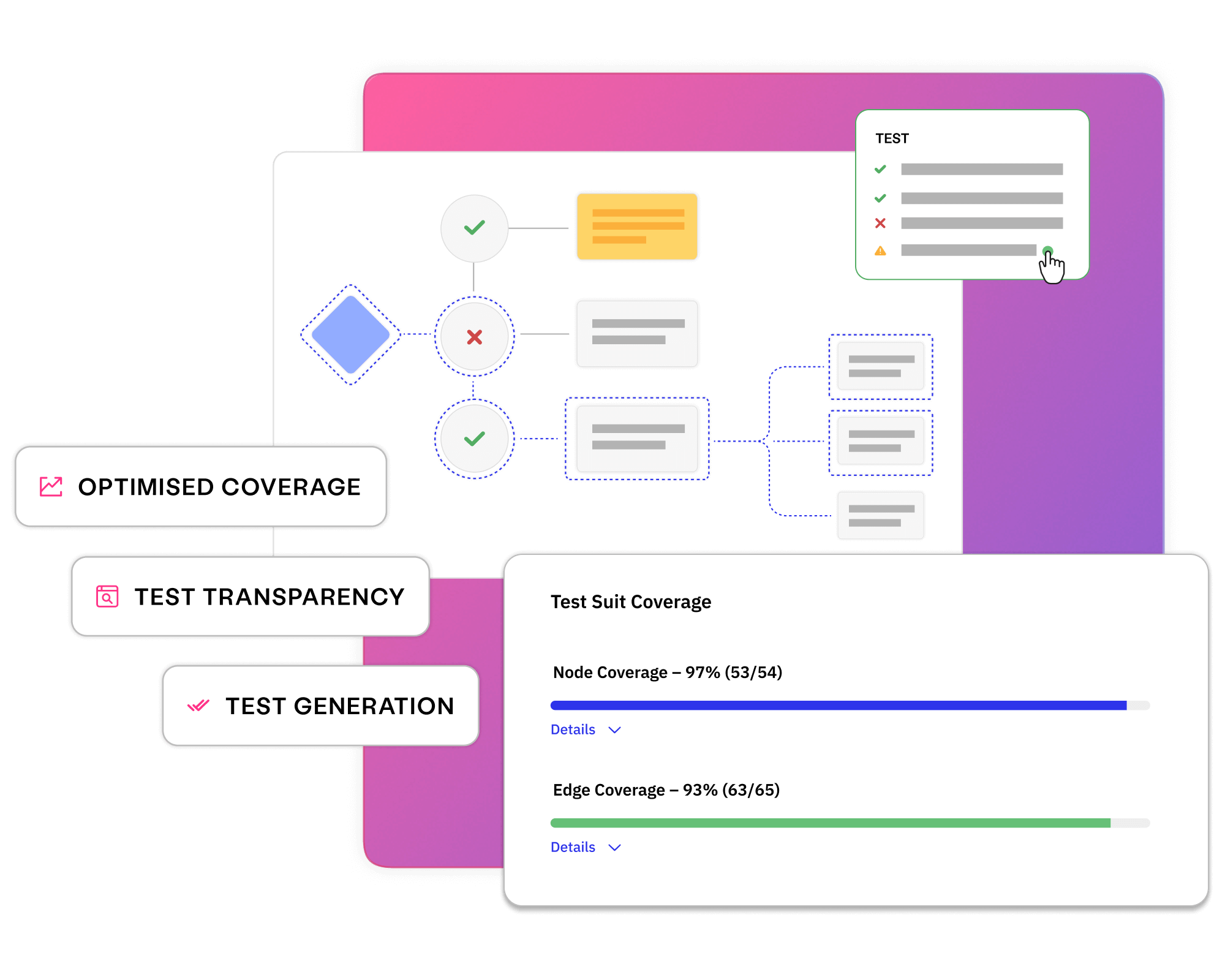
Leverage AI-driven insights to gain an accurate understanding of your current test data landscape and intuitively optimise processes, resources and data for future project needs.
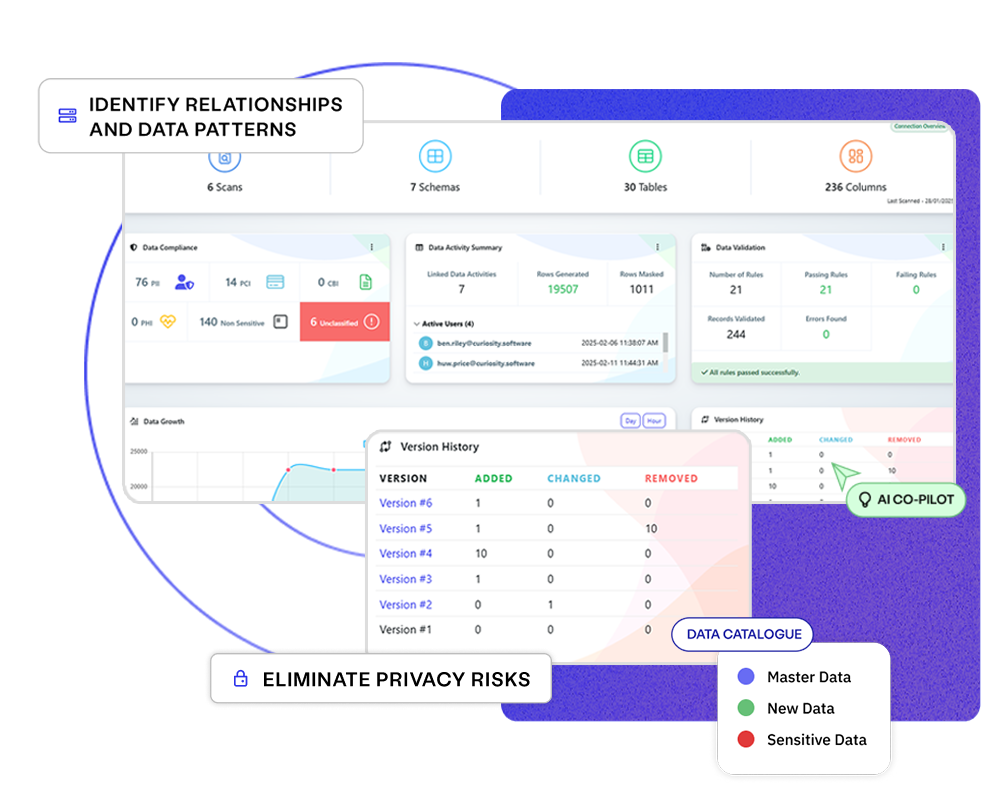
Provide the domain expertise and specialist feedback your teams need. AI assistants pay off technical debt, provide on demand clarity, and augment your application landscape.
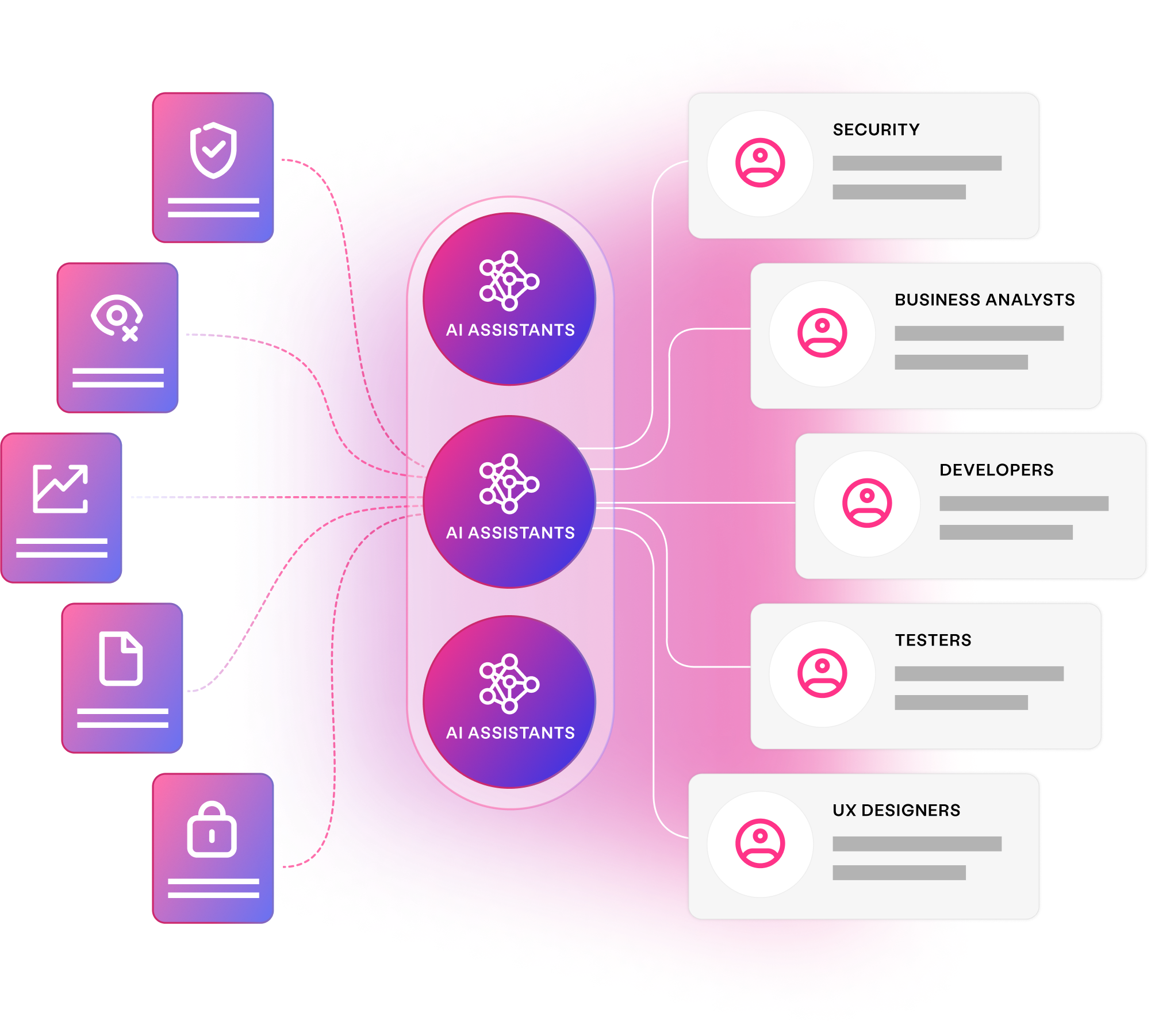
Transform your data management with self-driving capabilities. Seamlessly deliver the right data, to the right teams, at the right time, across your entire enterprise.
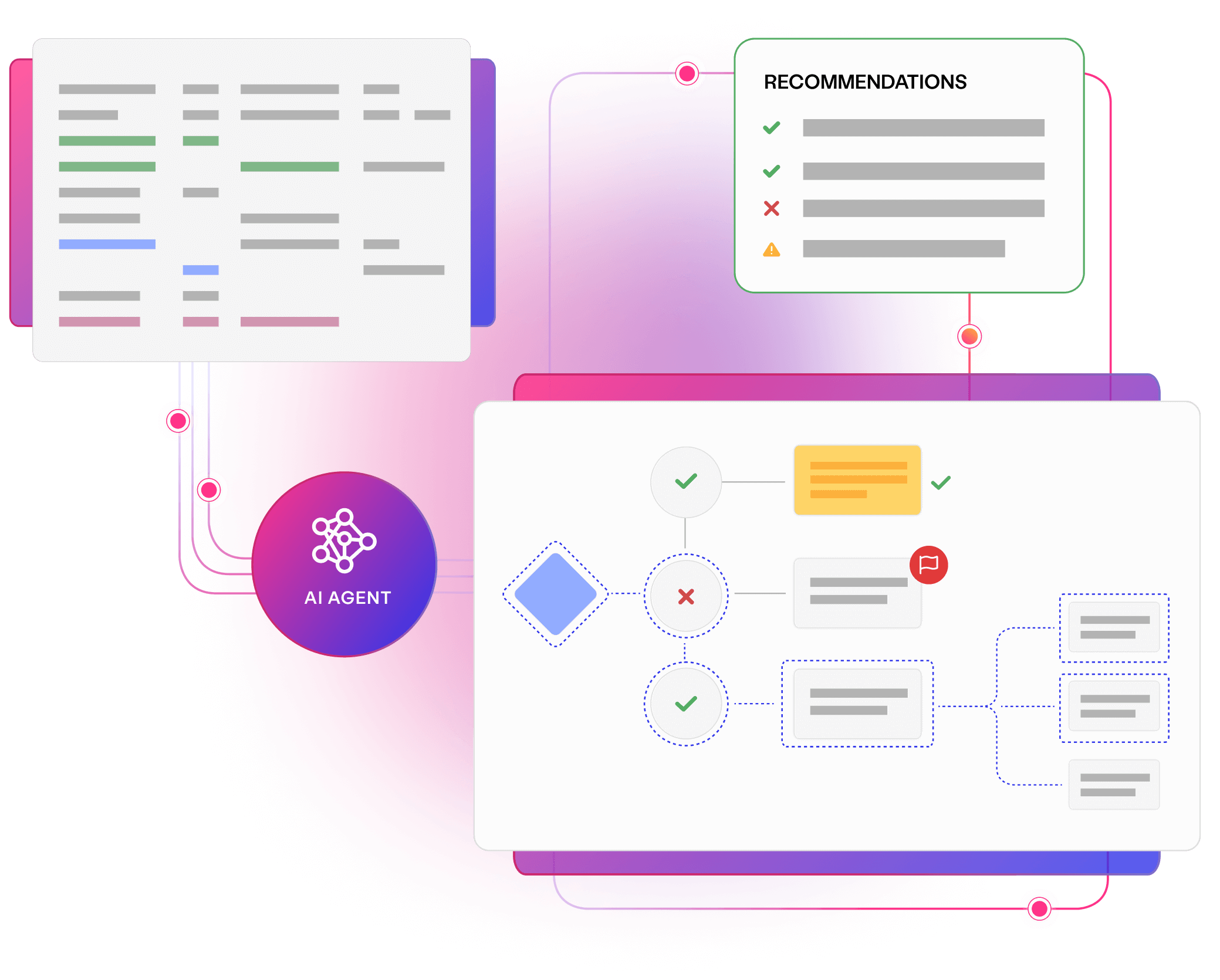
Stop wasting delivery time finding, making and waiting for test data. Provision data using self-service forms, seamless integrations, and an automated test data toolkit.
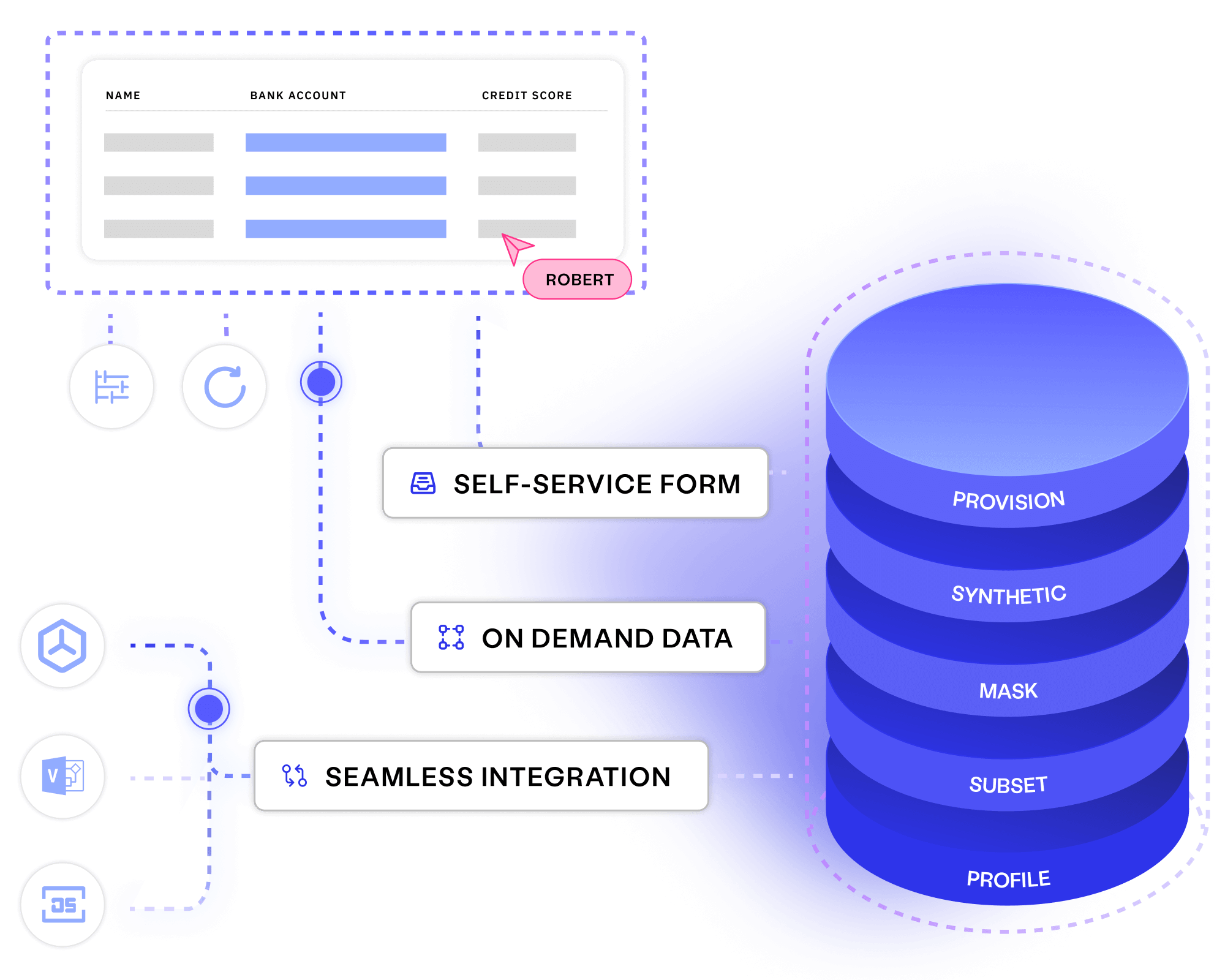
Create fictitious data to cover every user story, test case and business requirement, available on demand to your entire delivery ecosystem.
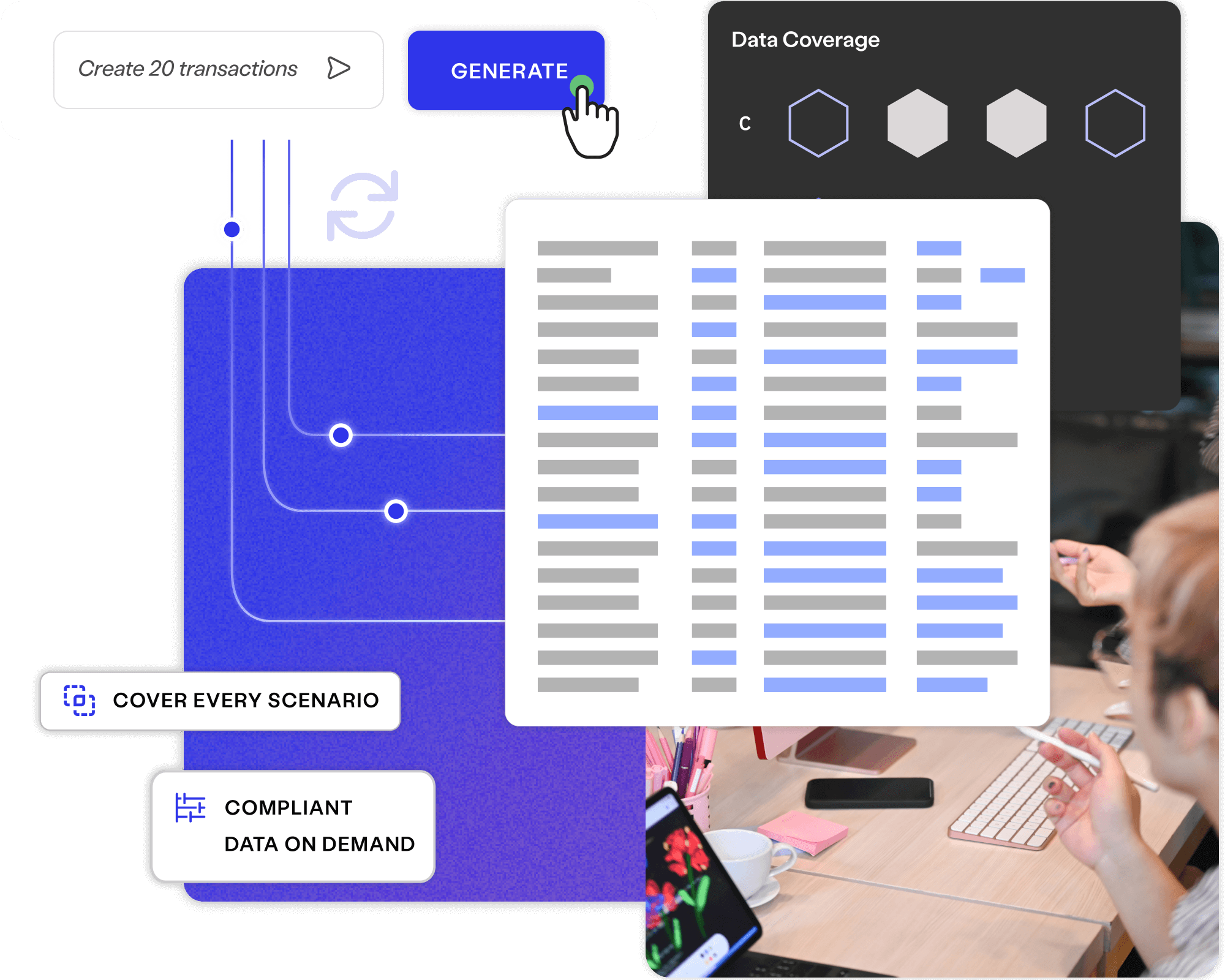
Automatically identify and anonymise sensitive data before it’s provisioned to less-secure environments. Avoid data breaches and ensure regulatory compliance.

Across industries, some of the world’s largest enterprises use Curiosity's platform to deliver rich and compliant data on demand.
Manually finding and making data adds up to one of the most resource-intensive, time-consuming tasks in testing and development. Automating provisioning can make the difference when striving to hit release deadlines and stay on budget.

Senior Test Data Engineer
AI is making system data more complex than ever. Developing AI-driven, AI-built systems requires diverse data that reflects intricate relationships, trends and hierarchies. Model-based data generation is perfect for overcoming this complexity.

Principal Test Data Engineer
Using generative AI to visualise complex requirements provides the clarity developers need to build quality systems. The same models then generate optimal tests, testing continuously and paying off technical debt in requirements, tests and code.

Chief Technology Officer
Testers and developers can spend 20-50% of their time on data-related activities. Accurately and automatically provisioning test data is one of the biggest and fastest wins for enterprises seeking to deliver software faster and with better quality.

Test Data Engineering Lead
Curiosity’s models ensured the reliability of complex connections between user types, so payments stay on target and private data remains secure … They identified minor and major bugs, so we could bring our product to market quickly—and guarantee our users a simple, worry-free experience.

John McElroy
President of Eljin Productions
Payment platforms and complex banking systems are perfect for model-based data generation. We can break their intricate logic down into intuitive visual models, applying algorithms that create the smallest message set needed to cover diverse combinations.

Program Manager, ISO 20022
Visual models break our system down in reusable chunks that generate the functional and visual tests we need. We can further assemble these reusable building blocks automatically as new courses are checked in, generating rigorous tests.

Greg Sypolt
VP of Quality Engineering
Curiosity’s platform enabled rigorous in-sprint testing, while facilitating cutting-edge development practices like shift left API testing, fail-fast experimentation, and test-driven API design. It worked seamlessly alongside our teams and processes.

Johnny Pitt
Founder of ThinkDonate
Importing requirements to visual models not only generates rigorous test automation at speed; it also improves the requirements and pays off technical debt. This transparency and shared vision allows critical thinking upfront, while building quality throughout the delivery lifecycle.

Product Owner
Miscommunications, silos, and a lack of transparency create bottlenecks throughout software delivery. AI can now diagram complex requirements and generate tests. This not only accelerates delivery and pays off technical debt; it also provides a collaborative vision that aligns every team.

VP of Application Delivery
Read a resource, or speak with an expert, to discover how you can transform your enterprise test data management.

Discover how you can deliver complete and compliant data on demand across the enterprise.
Read more about Enterprise Test Data brochure Download your copy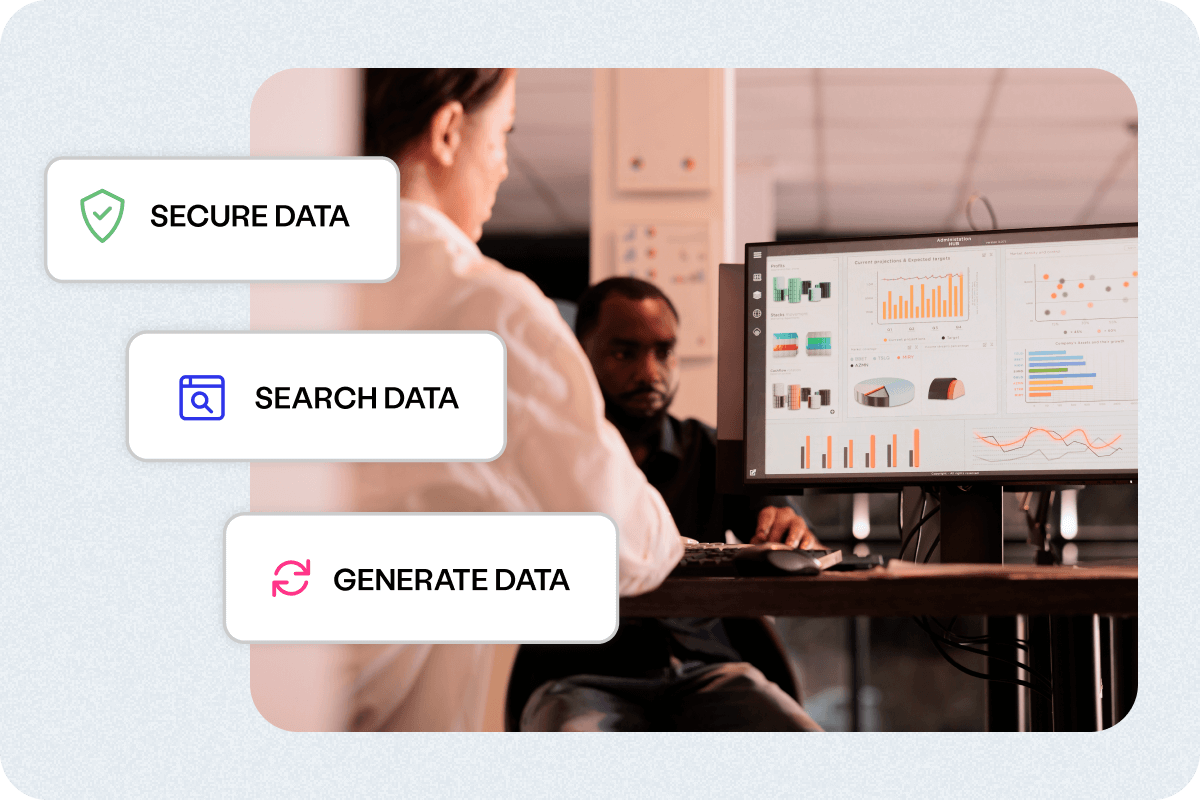
Discover how a Global 2000 software vendor uses Curiosity's Enterprise Test Data.
Read more about Test data generation for an AI-driven platform Read the full story
Speak with a Curiosity expert to learn how you can advance your software quality and productivity.
Read more about Meet with a Curiosity expert Book nowOur platform integrates with your people, processes and tools, with over 250 data connectors covering databases, mainframes, files, messages and more.
View all integrations